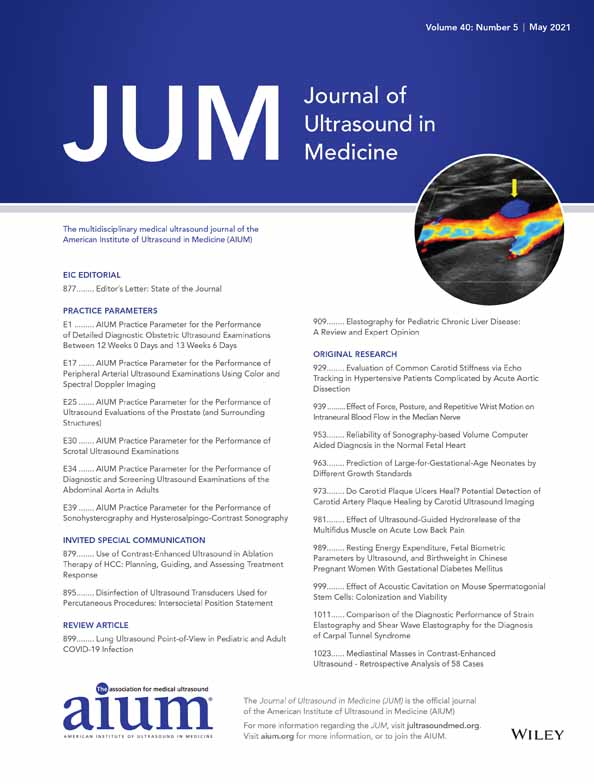Disinfection of Ultrasound Transducers Used for Percutaneous Procedures
Intersocietal Position Statement
We, the undersigned organizations, wish to address the issue of disinfection of transcutaneous ultrasound transducers used for percutaneous procedures or for the purpose of monitoring other invasive procedures.
- Ultrasound-guided percutaneous procedures are imaged transcutaneously, ie, through intact skin, to monitor procedures done percutaneously in conjunction with a transducer cover and can be safely performed in conjunction with LLD.10-12
- Transducer covers for transcutaneous procedures are meant to protect the sterility of the procedure, not to make the transducer sterile. An analogous situation exists for human hands in surgical procedures. The gloves that cover the hands adequately protect the procedure from contamination, even though only LLD via hand washing is performed prior to surgery. LLD via proper hand washing plus sterile gloves has been safely used for over a century and LLD of devices placed inside of sterile covers should be equally safe.10-12
- If contamination of covered transcutaneous transducers with blood or other bodily fluids occurs, it can be eliminated with low-level disinfectants that are effective against mycobacteria and bloodborne pathogens (including hepatitis B virus, hepatitis C virus, and HIV).13-17 Human hands are always cleaned LLD and covered with gloves.18
- HLD was meant to clean instruments intended for contact with internal organs or mucous membranes.19-26 Evidence of infection from ultrasound (US) transducers relates to contaminated gel and improper cleaning of internal transducers.19, 20, 23-25, 27, 28
We recommend cleaning and disinfection for the reprocessing of transducers used for percutaneous sheathed US procedures on the basis of the scientific and safety information available. We also call on other organizations that address this issue to disclose contributions from manufacturers of US disinfection equipment.
Respectfully,
American Academy of Emergency Medicine*
American Association of Neuromuscular and Electrodiagnostic Medicine
American College of Emergency Physicians
American College of Osteopathic Obstetricians and Gynecologists
American College of Radiology
American Medical Society for Sports Medicine**
American Institute of Ultrasound in Medicine
American Registry for Diagnostic Medical Sonography
American Registry of Radiologic Technologists
American Society of Anesthesiologists***
Association for Professionals in Infection Control and Epidemiology
Association for Vascular Access
Emergency Nurses Association
Infusion Nurses Society
International Society of Ultrasound in Obstetrics and Gynecology
Point-of-Care Ultrasound Certification Academy
Society for Healthcare Epidemiology of America
Society for Maternal-Fetal Medicine
Society of Breast Imaging
Society of Radiologists in Ultrasound
* Independently, the Emergency Ultrasound Section of the American Academy of Emergency Medicine has also endorsed the position statement.
** The AMSSM board has voted to Affirm for Value the position statement.
*** The ASA Council has approved support with the following notation: "Since the document has neither been presented to nor approved by either the ASA Board of Directors or House of Delegates, it is not an official or approved statement or policy of the society. Variances from the recommendations contained in the document may be acceptable based on the judgment of the responsible anesthesiologist.




